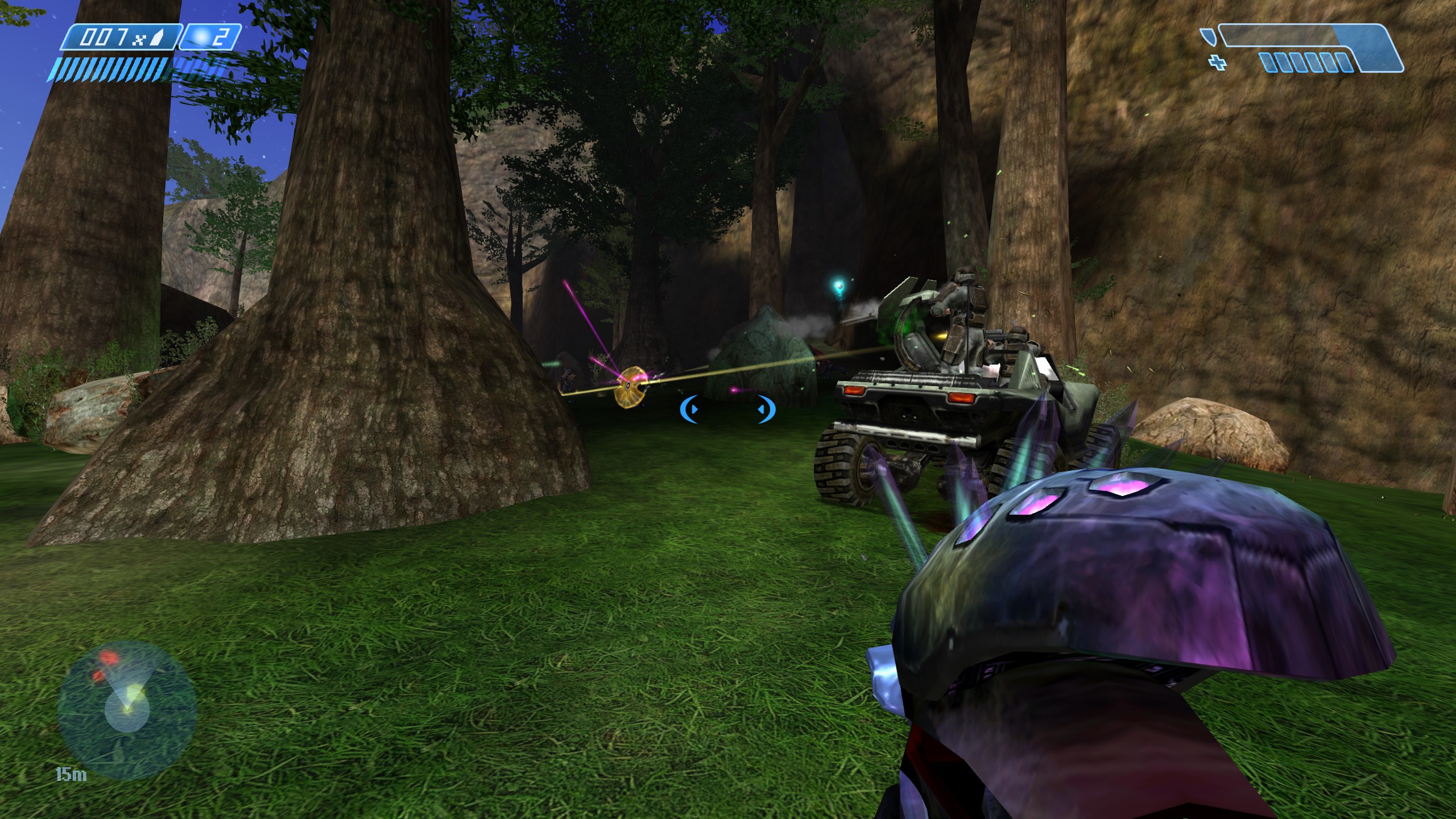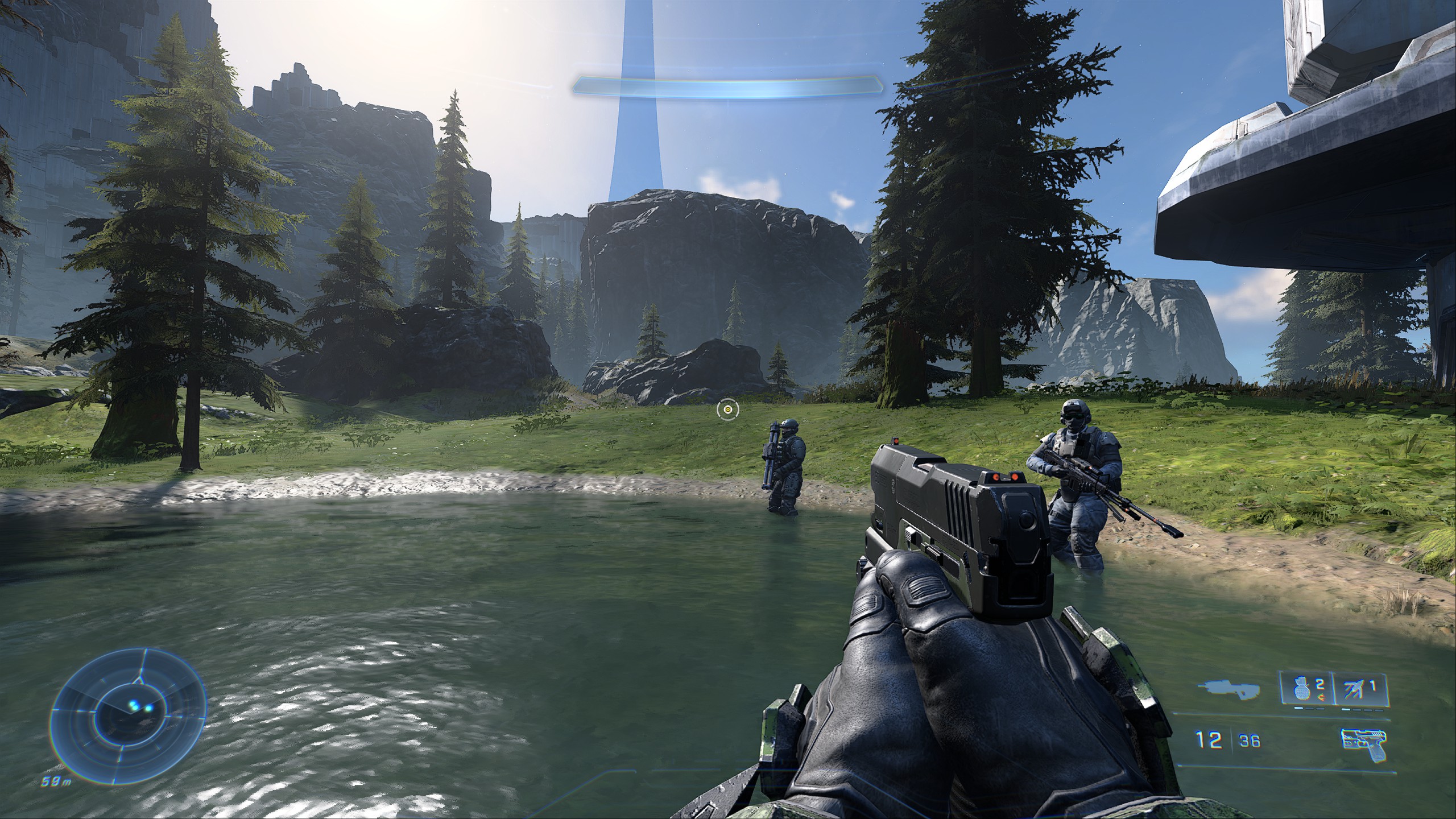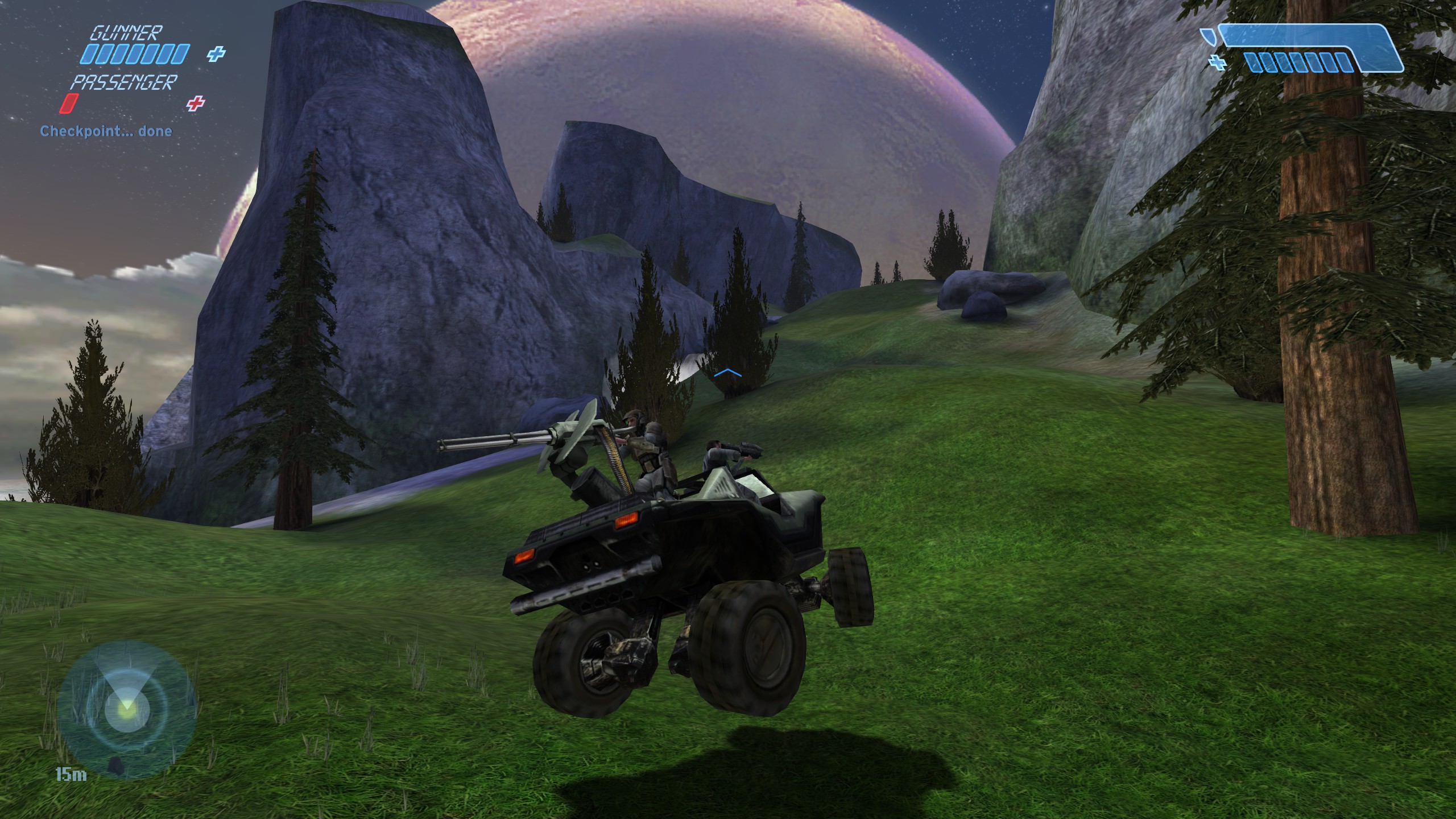Halo Infinite is not The Silent Cartographer
343's latest owes more to a less well-remembered level from the original Halo.

So, you beat the Halo demo. Even if you never played Master Chief's debut entry back in 2001 (or 2003 on PC), there's a good chance you know about The Silent Cartographer. Halo: Combat Evolved's fourth mission is a masterpiece of level design, a compact showcase for Bungie's FPS sandbox and, as the level chosen for the game's wildly popular demo, likely the most instantly recognisable mission in the entire series.
It is not, however, the blueprint for Halo Infinite's open world.
You'd be forgiven for thinking it was, of course. Many previews and reviews have compared Halo Infinite's expansive ringworld with the first game's open-ended island, and 343 has even name-dropped the Cartographer as a stand-out inspiration. The studio isn't exactly wrong, either—after all, Bungie didn't pick The Silent Cartographer as the game's demo map for no reason.

See, The Silent Cartographer is very good at tricking you into thinking its open ended. For those unfamiliar, the map sees you landing D-Day style on a fortified beachhead, leaping out of dropships to storm a Covenant-held island. Once the LZ is secured, you're given seemingly free reign to explore the island—poking at old alien structures to find your way into the labyrinth that lies beneath the island's surface.
You can follow the main path counterclockwise around the island, sure, but you can also turn around immediately and find another path earlier than intended, skipping the first few encounters entirely. The Silent Cartographer also has great open spaces to whip a Warthog around (or exploit the game's physics to send jeeps into orbit).
Aside from skipping that first section, however, The Silent Cartographer has a very strict sequence of events. It's fantastically smart in its linearity, refreshing the same locations with new challenges, making you genuinely feel like you're prodding at this island fortress for weak spots, but it's not the template for what an open-world Halo might look like.

Halo, Halo
Instead, Halo Infinite probably owes its allegiance more to Halo's less well-remembered second stage, the confusingly named Halo. Crash landing on the ringworld and stepping out into a vast alpine valley, Halo sets up the promise of a grand open world full of secrets to uncover and aliens to shoot.
The biggest gaming news, reviews and hardware deals
Keep up to date with the most important stories and the best deals, as picked by the PC Gamer team.
Halo (the level) immediately introduces us to the Pacific Northwestern pine forests that would become the defining environment of Halo Infinite's open world. Line up the two games side by side and they're practically identical, save a few decades of graphical improvement.
it's been 20 years and seeing a whopping great hoop in the sky is still the coolest shit pic.twitter.com/ySjF744K68December 7, 2021
But it's not until Halo (the level)'s second half that Infinite's roots reveal themselves. After rescuing the first squad of survivors from the Pillar of Autumn and making your way through ancient alien tunnels, Chief resurfaces in a vast open canyon. There are three more squads to rescue across the map, and they can be discovered in any order.
Each squad presents its own challenges and offers its own tools. The closest is holed up in a dense boulder field, fending off Covenant dropships in close quarters. But push a little further and you'll find yourself an early sniper rifle, guarded by marines nested on a steep hillside. If you want to keep cruising in a Warthog, the farthest squad is fortified in a wide open cliffside structure—with lanes wide enough to run down fleeing squads of Grunts and Jackals.
It's an incredibly rudimentary form of open world, and each squad is laid out in such a way that there's an expected order to tackle them in. But the game will accommodate for any order you choose, and that central field will update with roaming baddies after each rescue.

Here, in 2001, Halo Infinite's template was laid bare. Zeta Halo is itself a lush pine forest full of marines to rescue and ancient structures to delve into. Of course, in 2021, it's also acutely aware of what open world games can be and has packed itself with more activities, more secrets, more varied challenges to take on. But with Halo, Bungie might as well have written the design document for its 20-years-later successor.
If anything, I wish Halo Infinite really was a little more like The Silent Cartographer. In my Halo Infinite review I lamented that the game never moves beyond pine forests and Forerunner installations—that in being tied to one chunk of the ring, its missions can't travel to new locations in the way even Halo 1 allowed for.
A forest full of baddies to slay and allies to rescue is fun, but its many locations bleed together into one pine-scented blur. Infinite needs more locations that feel like singular, grounded places, places dripping with character that evolved over the course of the game.
It needs locations with the charm and complexity of that small, dense island full of ancient Forerunner secrets.

20 years ago, Nat played Jet Set Radio Future for the first time, and she's not stopped thinking about games since. Joining PC Gamer in 2020, she comes from three years of freelance reporting at Rock Paper Shotgun, Waypoint, VG247 and more. Embedded in the European indie scene and a part-time game developer herself, Nat is always looking for a new curiosity to scream about—whether it's the next best indie darling, or simply someone modding a Scotmid into Black Mesa. She also unofficially appears in Apex Legends under the pseudonym Horizon.

